By Dawit Giorgis
(With Extracts from a chapter on “Truth and Reconciliation” in my recent book What a Life pages 353 to 423)
 In a free and democratic state, National Dialogue is an ongoing exercise conducted through freedom of expression, through elected representatives, the media, and the freedom to be heard and obligation of leaders to listen and respond. Special National Dialogue mechanisms are created in countries where these kinds of freedoms do not exist, and the government loses control and the country slides into anarchy and internal conflicts. A National Dialogue of the type that is being discussed in Ethiopia, can become a popular and useful tool to transition the country from conflict to peace and stability. As expressed by one expert: National Dialogue “can broaden debates regarding a country’s trajectory beyond the usual elite decision makers; however, it can also be misused and manipulated by leaders to consolidate their power.” If properly implemented in good conscience, even though politics does not have any conscience, “national dialogues offer the potential for meaningful conversation about the underlying drivers of conflict and ways to holistically address these issues” (US Peace Institute, 2015 by Susan Stigant and Elizabeth Murray 2015)
In a free and democratic state, National Dialogue is an ongoing exercise conducted through freedom of expression, through elected representatives, the media, and the freedom to be heard and obligation of leaders to listen and respond. Special National Dialogue mechanisms are created in countries where these kinds of freedoms do not exist, and the government loses control and the country slides into anarchy and internal conflicts. A National Dialogue of the type that is being discussed in Ethiopia, can become a popular and useful tool to transition the country from conflict to peace and stability. As expressed by one expert: National Dialogue “can broaden debates regarding a country’s trajectory beyond the usual elite decision makers; however, it can also be misused and manipulated by leaders to consolidate their power.” If properly implemented in good conscience, even though politics does not have any conscience, “national dialogues offer the potential for meaningful conversation about the underlying drivers of conflict and ways to holistically address these issues” (US Peace Institute, 2015 by Susan Stigant and Elizabeth Murray 2015)
Many Ethiopians have been made to believe that some ethnic groups can secede and establish their own independent states. Some even compare Ethiopia to former Yugoslavia; Ethiopia cannot be compared to Yugoslavia. These are two different countries, two different civilizations, two different historical realities. Ethiopia cannot be partitioned in any form. Declarations of secession could be made by any of the ethnic groups, but none can ever be able to establish a viable state and/or live in peace. They will be at war with each other for centuries to come. Secession is not realistic and should never be considered as an option by informed people, who are fully aware of the history of these two countries. Ethiopians are people who have lived together from time immemorial, and the common ties that bind them are too strong and complicated to be broken by declarations of secession. The only viable option is genuine dialogue and lengthy but worthy process of Reconciliation and to coexist peacefully and equally with mutual respect for our colorful differences. Accepting this reality by the participants is the primary foundation for a meaningful National Dialogue.
If the purpose of the National Dialogue is transitioning, there must be a mandated transitional government which oversees the work of the National Dialogue and be able to implement its recommendations. There cannot be a transition without a body or organ to enable and facilitate the transition. A transitional government can be formed by an independent body appointed by the parliament or the parliament itself before it dissolves itself and suspends the constitution or another mechanism created after a public debate. Of Course, this all can take place only if the government is courageous enough to put the urgent needs of the country ahead of its own. People cannot support the status quo and at the same time wish to have a transition. We therefore cannot run away from the idea of a transitional government and expect to have transition to peace by the same government which is a big part of the problem and has shown utter incompetence and narrow mindedness in managing the complex political environment it created (PP, TPLF or EPRDF).
A National Dialogue needs to be well structured and organized by non-governmental commissions, if necessary, with support of regional organizations like the African Union or the United Nations. The convener’s responsibility is to the participants of the dialogue and the people of Ethiopia. The government cannot be a convener, nor should it have any role in the selection of the participants of the National Dialogue for obvious reasons.A National Dialogueis a forum where there would be no restriction on freedom of speech. National Dialogue cannot be conducted in a country that everyday sends activists, journalists, and any person seen as anti-establishment—to prisons routinely. A National Dialogue with a noble mandate should be able to operate with a full sense of security and freedom, which the government in power will not be willing to guarantee, hence the need for a transitional government.
National dialogues cannot operate within the existing institutions of government. National Dialogue is under discussion in Ethiopia, because government and its institutions are unable to resolve the major issues at hand, either because they are seen as neither legitimate nor credible, or because they are unwilling to challenge the status quo. A national dialogue will have its own set of procedures and rules for making decisions, which should be transparent and carefully tailored to the composition of the group and the nature of the issues. An effective national dialogue is inclusive and convenes a broad set of stakeholders for a deliberative process.
“Transparency and Public Participation
Even a dialogue that includes all major interest groups risks losing legitimacy if there are not sufficient opportunities for the public to remain informed about and feed into the dialogue. Beyond the delegates who are in the room, a national dialogue should also have mechanisms to include the broader population. A national dialogue seeks to reach to an agreement on key issues facing a country. Often, months or even years of pre-negotiations or consultations need to take place to identify and agree upon these issues, which could include any number of conflict-fueling themes: national identity, the role of religion in government, political rights, basic freedoms, institutional reform, election procedures, and the structure of government (often the debate about federalism). A national dialogue’s agenda should provide for substantive conversation around the major grievances of all key interest groups agreed mechanism for implementation of outcomes.National dialogues should feature an agreed uponplan to ensure that the resulting recommendations are implemented through a new constitution, law, policy, or other programs. Because national dialogues take place within a broader transition, they often have formal or informal relationships to transitional justice, constitution making, and elections. Without a clear implementation plan, a national dialogue risks consuming extensive time and resources without producing any tangible results” IBID
Truth and Reconciliation Commissions (TRC) in South Africa
TRC is one important aspect of national dialogue to bring sustainable peace through reconciliation. In the case of Ethiopia, when we talk about National Dialogue, we are talking about TRC. I have personally attended the TRC processes in South Africa, Rwanda, and Liberia. These were a series of events in Africa that were quiet extensively discussed at the time. I did write about my experience and opinions on the conduct of this process on several occasions. The term TRC gives a wrong impression that reconciliation in a wounded nation such as Ethiopia, can easily be achieved by telling only the Truth. First and foremost, the truth, the whole truth mut be told.But the truth itself will not and cannot be the only tool forreconciliation. Ethiopian society can begin to live together with tolerance and peace only after the whole truth about our history is told and publicly discussed and the crimes committed during the period are acknowledged or a consensus is reached and justice has been served, and those responsible for igniting and fanning the fire are identified and brought to justice. The future of Ethiopia depends upon Truth, Justice, Reparations and Reconciliation in this order.A blueprint of this has been published in my recent book.
New leaders have to come out and liberate the people from the bondage of false history and propaganda. In this digitalized world it has become difficult to talk about the truth. The world is overwhelmed with fake stories and Ethiopia is one of the victims. After the whole truth has been told, the purpose of justice should not only be retributive, but also address the injuries sustained by the victims and the community as a whole so that people can begin to get back some of what they have lost. Certainly no kind of justice system can bring people back to where they were before these horrific crimes were committed. Victims and community will live the rest of their lives with the agony of losing their loved ones and the trauma of witnessing atrocities; but restorative justice might at least bring them part of the way back from the brink of despair. This approach certainly would go a long way towards repairing the psychological injuries of the victims and the societal trauma as well.
South Africa also brought the term “transitional justice” to the world’s attention, a more specific type of restorative justice whose goal is to create a lasting peace. The public face of the TRC was the late Archbishop Desmond Tutu who assured those who doubted the concept of restorative justice that “there is justice…the perpetrators don’t get off scot-free…they have to confess publicly.” Public confession was not, however, the only condition for the granting of amnesty. Importantly, confessors were required to provide honest and comprehensive
disclosures of all relevant facts.416There is no doubt that the TRC’s restorative justice efforts moved South Africans closer together both at the individual level and for the country as a whole. People could tell their stories and clear their consciences, finding peace in truth. As one South African historian put it, “nothing short of a miracle can heal a country” but “for the first time it was possible to see beyond the pain that many had suffered. As a country we would have been much poorer had the truth not been told. I believe it was truly a necessary part of our history.”417
Thousands of victims and perpetrators made statements. It wasn’t all one-sided; the ANC’s struggle was found to be legitimate, but some acts committed in the name of that struggle were not. Albie Sachs, a former ANC member who became a judge had this perspective: “It had to involve a degree of acknowledgment by those who’d done terrible things, not only on the side of the regime but also members of the ANC, to which I belonged. We’d done bad things. We
had to come clean on that.”418The work of the Commission ended with recommendations, including “specific guidelines for financial reparations to victims,a list of over 300 perpetrators of apartheid who should be prosecuted, and specific steps for restoring dignity nationwide and
equalizing the playing field in a country grounded in massive inequality.”419But for Judge Albie Sachs, “...the most important part of the truth commission was not the report, it was the seeing on television of the tears, the laments, the stories, the acknowledgements. As one political scientist put it, what the truth commission did was convert knowledge into acknowledgment.”420
That is all well and good, but it didn’t work. The Commission had an almost impossible task: how to balance blanket amnesty with legal prosecutions, who to forgive, and who to lock up. It was inevitable that there would be criticism from all sides. Still it must be admitted today when we look back that there were several glaring problems. First, it was too rushed and the scope of the Commission was too ambitious, too broad and expansive and simplistic. It seems that it was trying to give a quick solution to a complex problem that was deeply entrenched in the majority of the South African population. The TRC was not planned out very well. There was a rush to come up with a sense of making some people accountable quickly for the nation to move forward. The Commission was trying to cover human rights abuses spanning the years 1960 to 1994. The mandated period for them to complete their task was very limited if one considers the fact that this was a unique Commission and many people had to be trained to carry out tasks especially on lower levels. The Committees established by the Commission did not have clear methods of working and the coordination between them was poor. The methodology followed by the TRC was flawed….421Then there were too many amnesties.
Some victims felt bitter as they watched self-confessed murderers walk free and did not receive promised compensation. The executive director of the TRC Institute for Justice and Reconciliation, Stan Henkemann, commented: “the government and particularly the criminal justice system failed the people of this country in terms of the amnesty process. And you can imagine what it does to somebody whose family member was killed by somebody, and they can see that person walking around.”422Nelson Mandela thanked the TRC for doing a “magnificent job” while acknowledging its imperfections, but some believe Mandela and the
TRC were too forgiving and that White people continue to reap the rewards of apartheid.423 The Commission recommended reparations. It never happened. Tutu lamented how Mandela’s successors had left TRC business “scandalously unfinished”. He said: “By unfinished business, I refer specifically to the fact that the level of reparation recommended by the commission was not enacted; the proposal of a once-off wealth tax as a mechanism to effect the transfer of resources was ignored, and those who were declined amnesty were not prosecuted.424
Truth and Reconciliation in Liberia
After 14 years of civil war that left 250,000 dead and millions displaced in a small country of a little over four million, a Truth and Reconciliation Commission was agreed upon in the August 2003 Comprehensive Peace Agreement in Accra, Ghana.436 The goal of the TRC was to “promote national peace, security, unity and reconciliation,” and also make it possible to hold perpetrators accountable for gross human rights violations.437I was in Liberia from 2008 to 2010 and closely followed the process, even attending some of the deliberations of the TRC. I was also there when the final report was issued. I had the opportunity to talk to many politicians, witnesses, and many of the victims of the 14-year civil war. What I saw and heard showed the difficulties of any process of reconciliation. Mandate of the Commission Setting up the TRC was not as rushed as in South Africa.
The TRC Act was approved in 2005 and the Commission began active work three years later, holding public hearings after a period of assembling witnesses and collecting their testimonies. But reconciliation has been an elusive objective and Liberians continue to suffer from the trauma of the war, the abject poverty it left behind and the exclusion of the majority from the dividends of peace. Funds allocated for reconciliation were never released. Whatever was released was considered an insult. Even President Sirleaf admitted as she left office that she had failed at reconciliation and anti-corruption.459
There can never be reconciliation without justice. Unless people are made accountable for their crimes and are punished in some way society will not be healed from this war that showed just how debased human beings can become. Justice is the foundation for peace, harmony, and development. Justice means prosecution and trials. Nazis and fascists were put on trial at Nuremberg, the perpetrators of genocide in Rwanda were prosecuted, Congolese and Ugandan warlords have also been put on trial. Yes, Charles Taylor was put on trial but not for the war crimes he committed in Liberia but in Sierra Leone.
If the TRC Commission recommendations were implemented it could have been said that justice was served. But that was not done. Some criminals were prosecuted and convicted outside Liberia, in France, Belgium, the UK, and the USA. Authorities in other countries have been pursuing cases under the principle of universal jurisdiction, which allows national courts to try international crimes committed abroad by non-nationals against other non-nationals. They have also brought cases for crimes related to immigration, such as lying on immigration forms about involvement in abuses in Liberia. Chucky Taylor and many others have been prosecuted and sentenced in the USA, Belgium, the UK, and France. More needs to be done. Impunity crystalizes into a society without due process of law where the most powerful survive and the rest remain without or on the sidelines of justice. For victims, just as there can be no reconciliation without justice, so there can be no justice without truth. … [If] a country is to come to terms with its past and successfully turn its attention to the future, it is essential that the truth of the past be officially established. It is impossible to expect “reconciliation” if part of the population refuses to accept that anything was ever wrong, and the other part has never received any acknowledgment of the suffering it has undergone or of the ultimate responsibility for that suffering. 460
So long as unresolved historic injustices continue to fester in the world, there will be a demand for truth commissions. Unfortunately, there is no end to the need. In summary: in Liberia’s TRC all the truth was not told; justice was not served; reparations was not made, and there is no reconciliation between those who have been historically enslaved and their oppressors, between the warlords and the victims of the war. The TRC in Liberia was a failure.
Truth and Reconciliation in Rwanda
The UN Security Council established the International Criminal Tribunal for Rwanda (ICTR) to “prosecute persons responsible for serious violations of international humanitarian law committed in the territory of Rwanda and Rwandan citizens responsible for such violations in the territory of neighboring States, between 1 January 1994 and 31 December 1994…” The
resolution specifically mentions genocide among those violations.461 The Tribunal was located in Arusha, Tanzania with offices in Kigali, Rwanda. Its appeals chamber was in The Hague, Netherlands. Ninety-three individuals were indicted, 62 were found guilty and sentenced, 10 acquitted and 10 referred to national court. Those sentenced included high-ranking military men, government officials, businessmen, church and media leaders. Beyond its effectiveness in prosecuting these criminals, the ICTR was important for several reasons: for the first time in history an international tribunal delivered verdicts against persons responsible for committing genocide and it was also the first institution to recognize rape as a means of perpetrating genocide.462 Another “first” had to do with the media: the ICTR was the first international tribunal “to hold members of the media responsible for broadcasts intended to inflame the public to commit acts of genocide.” 463
The National Court System and the Gacaca Community Courts Rwanda’s national courts prosecute those accused of planning the genocide or of committing serious atrocities, including rape. By mid-2006, the national courts had tried approximately 10,000 genocide suspects. In 2007, the Rwandan government abolished the death penalty, which had last been carried out in 1998 when 22 people convicted of genocide-related crimes were executed. This development removed a major obstacle to the transfer of genocide cases from the ICTR to the national courts, as the ICTR drew to a close. Delivering justice for mass atrocities is a daunting challenge in any country, and the scale of the Rwandan genocide would have overwhelmed even the best-equipped judicial system. In Rwanda, the task was made more difficult by the fact that many judges, lawyers, and other judicial staff were killed during the genocide, and much of the country’s infrastructure was destroyed. Despite these challenges, the Rwandan government embarked on an ambitious and unprecedented approach to delivering justice, using both conventional domestic courts and community-based gacacacourts.464
Addressing the cases of many awaiting trials required the Rwandan government to re-establish the traditional community court system called “gacaca” (pronounced GAH-CHA-CHA), which became fully operational in 2005. Gacaca literally means “clean cut grass. In the gacaca system, communities at the local level elect judges to hear the trials of genocide suspects accused of all crimes except the planning of genocide. The courts give lower sentences if the person is repentant and seeks reconciliation with the community. Often, confessing prisoners return home without further penalty or receive community service orders. It is a homegrown sytem of justice. There were informal means of solving disputes around issues like theft, marital issues, land rights, and property damage which were constituted as village assemblies, presided over by the senior citizens, where each member of the community could request to speak. The trials were meant to promote reconciliation and justice of the perpetrator in front of family and neighbors. Well-respected elders, known as Inyangamugayo, were elected based on their honesty by the people of the community. … The inyangamugayo would assemble all parties to a crime and mediate a resolution involving reparations or some act of contrition.465The gacaca trials were formally closed in May 2012. As of January 31stof that year at least 1,951,388 genocide cases had been tried and completed.466
To Rwandans this was a success story and to the rest of Africa it was a model that could be adopted for their own judicial needs. It would be wrong to judge this traditional system in the context of the standards the West has established. In extraordinary times one needs to take extraordinary measures. In the circumstances that Rwanda found itself this was the most creative way of bringing closure to the tragedies every Rwandan had been through.There is no manual for reconciliation and peacekeeping, only a set of principles. Taking people out of the ashes and rebuilding a nation required giving up some classic rights and freedom for the sake of greater objectives: peace and reconciliation. Rwandans believed that gacaca courts were a homegrown answer to their need for justice, and they perfectly fit into the underlying stated objective of accountability with overtones referring to reconciliation.467Instead of monetary reparations to victims, those convicted were put to work constructing and repairing public roads and buildings. “In this way, the government believed that the public works would benefit Rwandans in general as well as the victims who enjoyed those public works constructed by the convicts.468
The Gacaca model is touted by the government of Rwanda, its allies and some scholars as a largely successful model of providing justice and building reconciliation. Chief among Gacaca’s scholarly supporters is Phil Clark, who argues that, while imperfect, Gacaca provided an avenue for many instances of successful reconciliation and builds a foundation for an evolving, post- conflict legal system in Rwanda. Others, however, argue that the Gacaca courts’ results are mixed. Boston University scholar Tim Longman found that rather than bringing Rwandans together, Gacaca courts have reinforced ethnic divisions as they are only used to prosecute crimes committed during the genocide period, to the exclusion of crimes (particularly revenge killings) committed by the ruling Rwandan Patriotic Front and by other Tutsis in the years immediately following. Other scholars are cited in the article who agree with Longman, predicting that the ethnic divisions will only get worse because of the gacaca courts’ decisions.469 However Rwandese lawyers and scholars have a different opinion: …[T]ransitional justice in Rwandan experience has a record of enormous success if viewed from its angle of ultimate goals: a) to restore the lost Rwandan element of humanity, peace, co-existence, unity and reconciliation of Rwandans. [authors’ emphasis] …
The establishment of Gacaca Courts that tried nearly two million suspects within ten years was not only impeccable but also a strong signal to Rwandans that solutions to their problems are within their means.470
I can confidently report that those scholars who predicted a worsening of ethnic divisions in Rwanda were wrong. I have seen the transformation year by year. When I was in Rwanda immediately after the genocide I was working among a population confused, traumatized, insecure, horrified, grieving, and not clear on how to continue a normal life as Tutsis and Hutus and as friends and neighbors. Both have only Rwanda as their country. They have nowhere else to go. Our discussion on a daily basis with my Rwandese friends was how can Rwanda move on from here? It was difficult to answer then.
I went back to Rwanda again a few times. I saw some promising changes, but they were still struggling. Finally I went back 20 years after the genocide. Nobody would have thought that a society filled with hate and the memories of horrifying crimes could come to terms with the terrible tragedies of the past, accept responsibilities, forgive, repent, learn from the mistakes of the past, wash their conscience before God and their community and create a peaceful harmonious society. It was a miraculous achievement to see Rwanda thriving and letting people know that the only way we can live a decent life, raise our families and fulfill our ambitions was through tolerance and openness. That is happening in Rwanda. It is there for the whole world to see. It needed strong leadership. Without strong leadership you have despair and chaos. Strong leadership makes peace and tolerance a priority and considers politics a tool to bring people together. President Paul Kagame has done a remarkable job. Some accuse him of being too strong, but liberal democracy cannot function in every society. In this case Paul Kagame took the right step in making the transition and allowing the wounded hearts of millions to slowly heal and give way to tolerance and openness.
From one of the most troubled countries in Africa, today Rwanda is leading Africa in every way. This has become possible because hate and revenge have given way to tolerance and peacful co-existence. Hutus and Tutsis communicate with no hostility, work togther, farm togther, attend community obligations together. People feel secure and less supicous of the other. Rwanda has opnened its gate to all kinds of investors. Its communication technology is growing by leaps and bounds. It has become the technology hub of Africa. After Botswana,
Rwanda is the least corrupt country on the African continent.471People focus more on growth and prosperity and have no time to look back, though there are still remnants of the interahamwewho are operating along the Ugandan border. The Great Lakes region hascomplex security problems that need to be addressed urgently. Rwanda’s problem with DRC, Uganda and Burundi is also a cause for concern.
Despite those challenges, under Paul Kagame’s leadership Rwanda is thriving. His rule is not without controversy. Some of his high-handed policies have been subject to criticism. But there is no doubt that he has shown resilience consistently and made the prevention of another conflict in his country a number one priorty. Few leaders have shown such result-oriented character and strength. On 4 December 2018, Forbes Africa magazine named him the 2018 African of the Year, and described him as a visionary. In addition, he was the winner of the African of the Year in the All Africa Business Leaders Awards. Many in Rwanda believe that he has been an indispensable leader for the last three decades. “On a continent where we have become so accustomed to hearing negative news, Rwanda under the leadership of Paul Kagame defies all the odds with its tenacity and creativity.”472
TRC in Other Parts of the World
If we compare Truth and Reconciliation in South Africa and Rwanda, the lessons are clear. Both processes had more or less the same objectives but the outcomes were very different. I believe that with all the flaws it had and with all the hard criticisms leveled against a top-down reconciliation effort Rwanda did much better than South Africa. In Rwanda the truth was told, perhaps not with complete accuracy, but it was out there in the community, in the presence of victims and suspected criminals. Justice was done through the gacaca system, the Rwandan court system, through the ICTR and the special tribunal in Arusha. Nothing close to this has happened in South Africa.There the truth was not told. All the perpetrators and criminals were not brought before the TRC and no reparations with Justice and Reparation were made and no efforts to reconcile all of the four communities which apartheid has divided: the Whites, the Indians, the Coloreds, and the Blacks. They remain as segregated as they were during the apartheid regime. Today it can be said that South Africa’s future is uncertain and it remains the most unequal country in the world. Rwanda, on the other hand, is a success story, taking into consideration the circumstances and its history. The world needs more Truth and Reconciliation, but it has to be done right. Over the past three decades, more than 40 countries have established truth commissions, including Canada, Chile, Ecuador, Ghana, Guatemala, Kenya, Rwanda, Gambia, Liberia, Morocco, Philippines, Sierra Leone, South Africa and South Korea. The hope has been that restorative justice would provide greater healing than the retributive justice modeled most memorably by the Nuremberg Trials after the Second World War.473
Beyond definitions, how would transitional justice look in the case of Ethiopia? Emphasis would be given to four elements:
- Truth seeking(or fact-finding). Non-judicial bodies would initiate investigations into human rights violations. These would often look not only at events, but their causes and impacts including inventions and distortions of history that have been claimed by all parties as the source of conflict and grievances.
- Justicethrough criminal prosecutions for those who were responsible for the most serious crimes. Traditional (tribal) court systems would handle minor crimes (see below).
- Reparationsfor human rights violations taking a variety of forms: individual, collective, material, and symbolic.
- Reconciliationwhich may include forgiveness and commitment to live in peace with respect to diversity including a federal arrangement to ensure decentralization of power.
Because of the number of violations and the fragile state of society not every violation will be dealt with as it might be in normal times. The Rwandan model can be used in such cases. For minor crimes and violations of human rights the traditional systems within each ethnic group can reestablish community court systems that address the wrongs, punish the violators, and redress the victims. This can take time, but it is important to be thorough. It took 16 years for the Rwandan gacaca system to complete its work as it addressed close to 2 million cases.
Change of constitution, reform of laws and institutions, including the police, judiciary, military, and military intelligence will follow based on the findings and recommendations of the National Dialogue (Truth, Justice, Reparation and Reconciliation Commission). Any kind of attempt to create a sustainable peace in Ethiopia must do all of the above. Any attempt short of this will not lead to peace. As unaddressed grievances and grudges drag on relationships between the people will reach an irreparable stage. It has already started.
Ethnic Politics has manufactured history and fake news. Many Ethiopians don’t know the truth, especially when it comes to our history. What passes for facts is what the government has carefully selected. Ethiopia’s history is better recorded than any in Africa, yet for over 30 years now Ethiopians have been exposed to a distorted and invented history of its people. They are fighting amongst themselves about history that has been created by politicians to serve a specific agenda. It would seem that many are unaware that history is being rewritten. The new generation does not read, cannot read, or does not have access to the historical facts. It accepts what the leaders of the various factions are telling them. Now the truth is being lost.
Conclusion
There cannot be any transition to peacefull co-existence unless the truth is told, consensus reached on the history of every ethnic groups boundaries defined based on historical records (not the records of the last 40 years ), crimes exposed, and the victims and the criminals are made to confront each other. Then justice can be delivered, reparations made, and the process of reconciliation can begin in a reformed Ethiopia that has dealt with its past.In trying to bring peace and implement reconciliation Oromo extremists and TPLF expansionists can present their cases in front of objective Ethiopian historians of any background and be willing to marshal their arguments and confront the historical facts in public before the National Dialogue (an independent Truth, Justice, Reparation and Reconciliation Commission.) No African country has a recorded history more than Ethiopia has. The archives will show that the boundary problems are all the creation of OROMO and TPLF elites in the last 40 or 50 years. Let the public and independent observers determine whose claims and historical assertions to accept.
Since time immemorial, there has never been a moment in Ethiopian history where there have been frank and honest public discussions on the grievances and claims of the various ethnic and religious groups. Now that the ethnic tensions have reached this level the only way to save the union, the only way to prevent civil war, and the only path to peaceful co-existence is an honest discussion by non-partisan historians on what really happened. There would probably be a need for psychologists as well because there is a faction of the extremists whose behavior suggests collective psychological problems that require close scrutiny to be able to communicate in a way that normal people do.
The psychological aspect of reconciliation requires a change in the conflictive ethos, especially with respect to societal beliefs about group goals, about the adversary group, about the in-group, about intergroup relations, and about the nature of peace. In essence, psychological reconciliation requires the formation of an ethos of peace, but this is extremely difficult in cases of intractable conflict. Political psychologists can and should work to improve the state of knowledge about reconciliation, which until now has received much less attention than conflict
resolution.531Reconciliation without the complete truth however painful it may be does not relieve the deep pain that exists. It will only be a masquerade for the divisiveness that will persist and eventually manifest itself in extreme violence that becomes the only outlet to the pent up anger and frustration accumulated over the years through irresponsible greedy elites that want neither truth nor stability. That is what we are seeing in Ethiopia. It is a long healing process that can eventually bring people together if started in good faith, and on a firm structural foundation.
It could have been a lot easier to suspend the constitution, which is the primary source of all the problems of current Ethiopia, dissolve parliament, establish a transitional government and call a national convention to chart the future of the nation as I stated at the 7thVision Ethiopia conference in Addis in December 2019, when I returned to my country after 33 years. That was when the PM emerged as an extremely popular leader. He could have done it with minimal resistance. Times have changed. A misguided narrow agenda and almost a childish behavior and a pathetic display of pompous self-adulation of the PM whom I call The Great Impostorin my book, together with three years of indifference, neglect, arrogance, atrocities, war, genocide and taking the Ethiopian people for granted, resulted in a missed opportunity that cannot come back and will make the work of uniting Ethiopia more difficult. Our people have shown patience and more recently resolve and determination to unite Ethiopia. The people have taken over to protect their rights, to stop crimes against humanity and Amhara genocide and determine their future peacefully in as much as it is possible. Ethiopia will prevail. Aluta Continua!
Dawit Wolde Giorgis
Executive Director The Africa Institute for Strategic and Security Studies. Visiting Scholar at Boson University African Studies Center.
- All the footnotes are to be found in the book according to the listed numbers.
—————————————-END—————————————

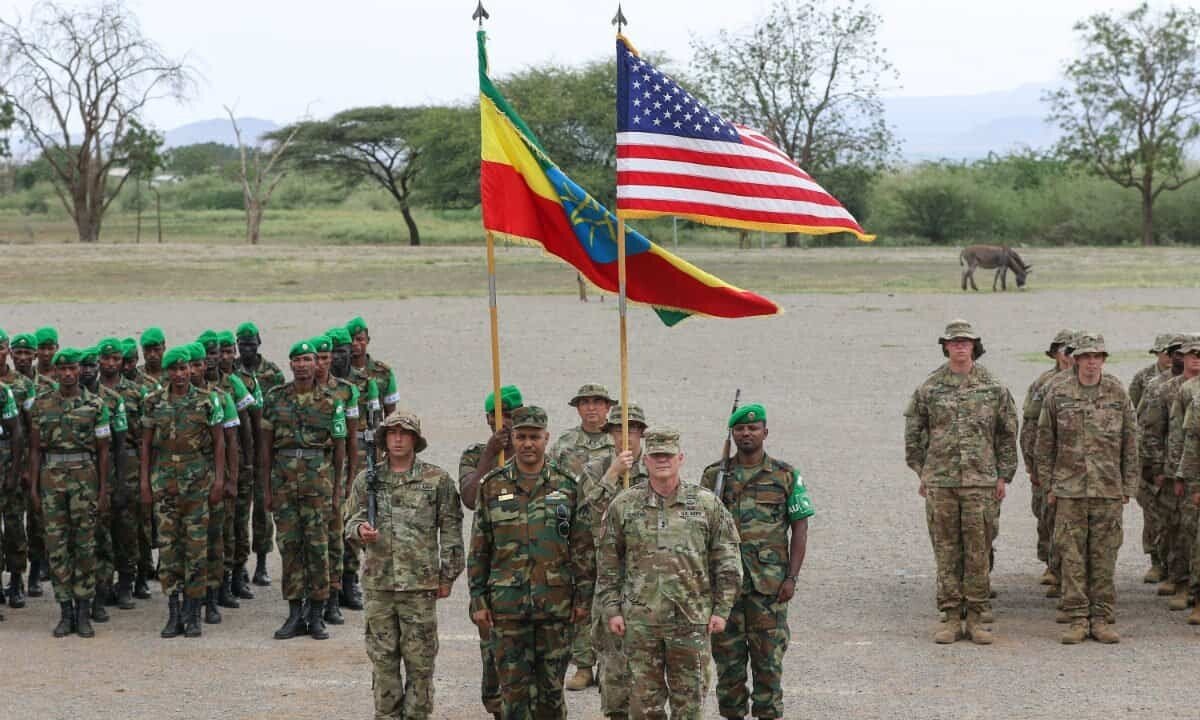
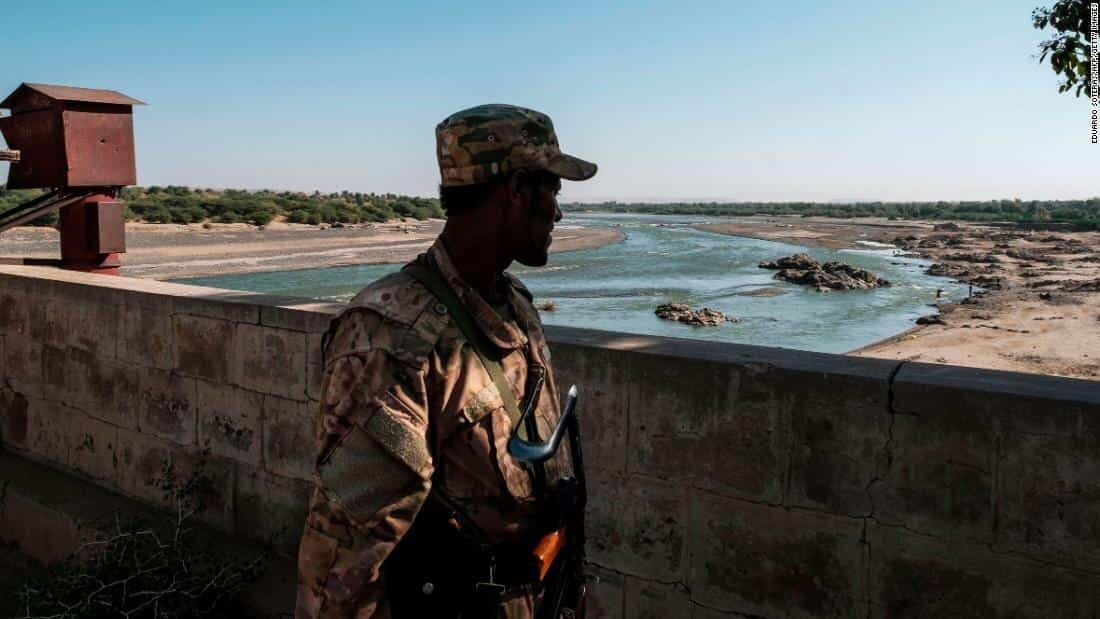
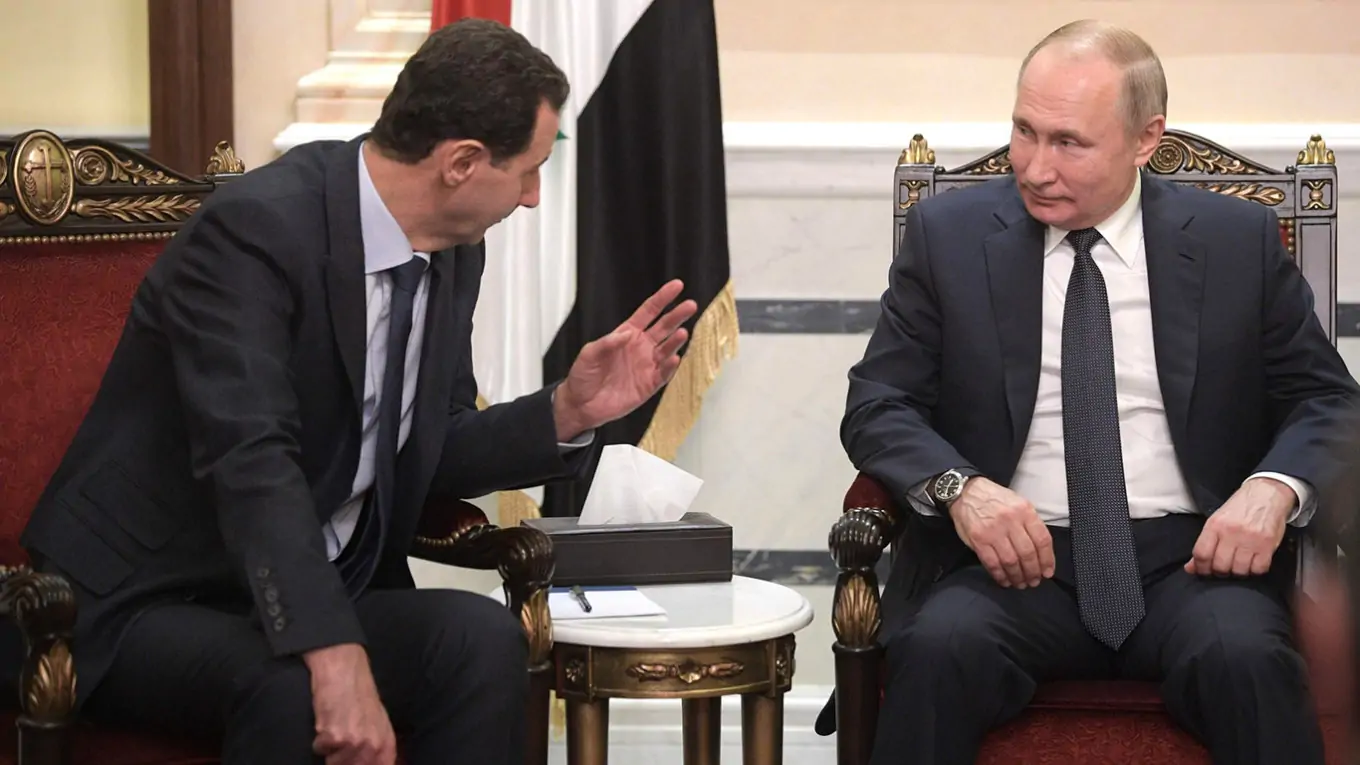
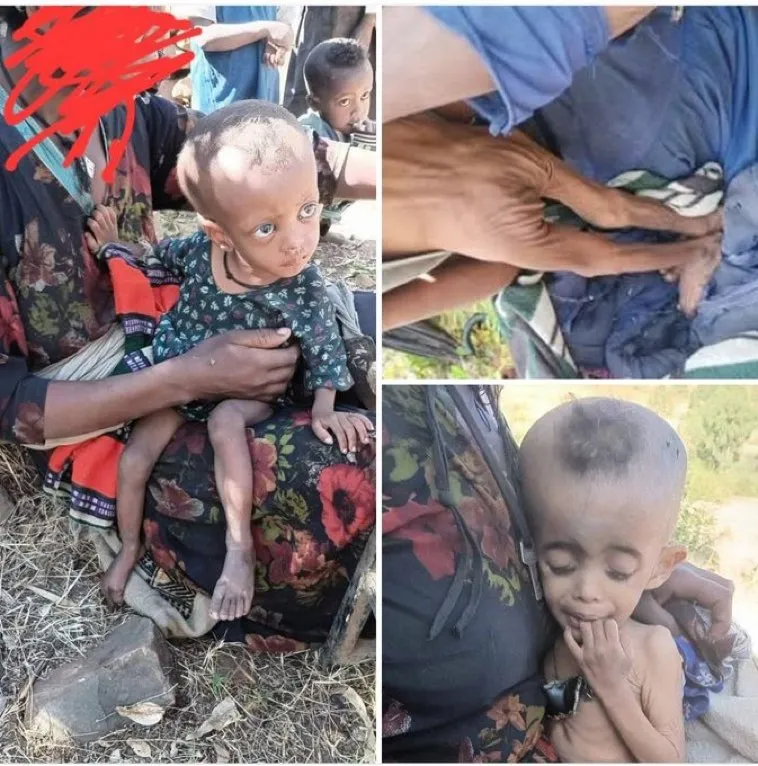









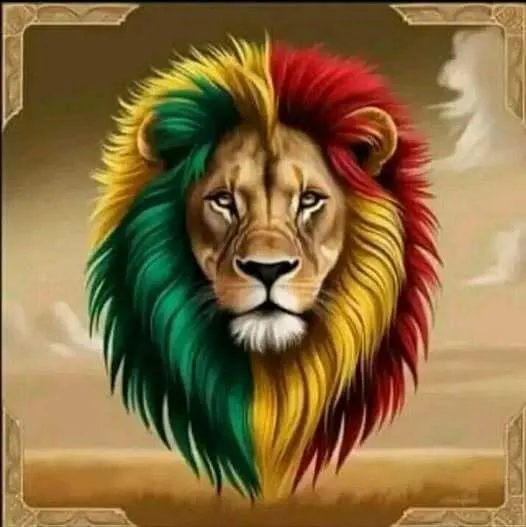
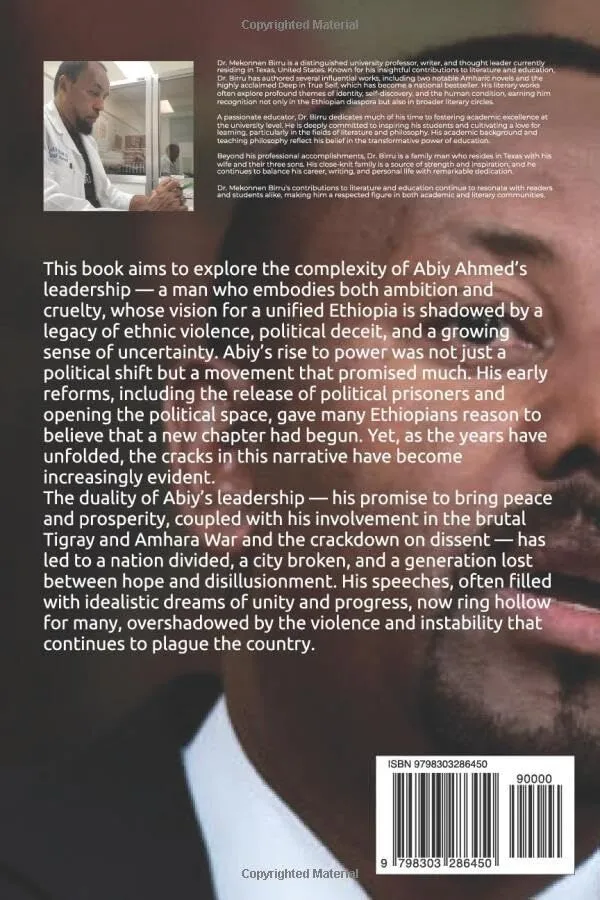
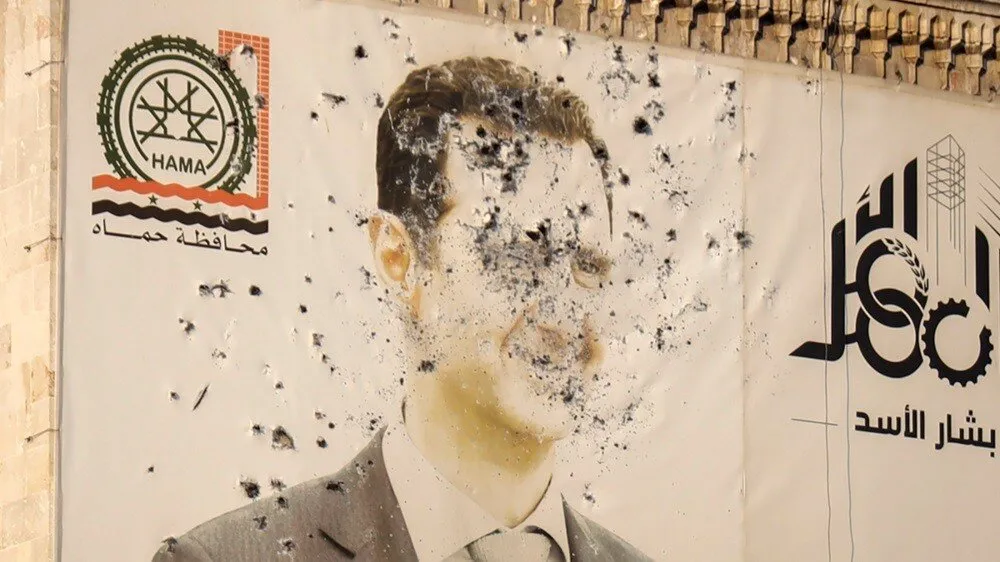
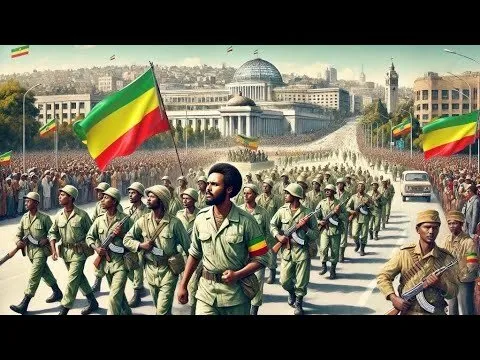
Problem with Dawit? No credibility on three counts. First, as central committee member of the Derg, he had a hand in all the gruesome history of the military regime. Second, his close collaboration with the US government. Third, he is himself an extremist, not an objective observer at all. One example from his article above would prove my statement: “In trying to bring peace and implement reconciliation,” says Dawit, “Oromo extremists and TPLF expansionists can present their cases.” Observe that he has not included “Amhara extremists!” (he being one !).
Well, I know how related he was with the Derg, but many were. What I like about him was that he was able to come out of it and wrote a very nice book, Red Tears. For that I respect him.
His present writing is also worth considering. I know he was associating himself with Amhara extremists but I chose to ignore it.
Rather, I would like to remind the colonel to to show bias (example understanding Ethiopian history) and the ‘bad’ part of federalism as negative occurrences. Let that be decided by informed negotiations
This article led me to an institute and its website I never knew existed. I found it to be loaded with a lot of material on Africa by a wide range of scholars/experts. But what this countryman wrote about PM Abiy is just too harsh and undeserving. It seems he was overtaken by raw emotion when he assailed the PM with a barrage of accusations and what amounted to be sheer insults. Our seats here thousands of miles away are cool and comfortable but the seats for high level officials particularly of PM Abiy are hot and in the cross hairs of every ‘wannabe’ imaginable. But still I urge this countryman to keep writing.
The prime minister Abiy Ahmed promised to lead a transition period 3 years ago. He reorganized the TPLF created and led EPRDF and renamed it the prosperity party with open doors to the TPLF. The proposals for a transition government are constructive but I doubt its practicality under the current situation in the country.
ለሕዝቡ በአማርኛ ዋና ዋና ነጥቦቹን በድምፅ ቀርጻችሁ አሰሙ። ጥቂት ልሂቃን ብቻ በፈረንጂኛ እየተከራከሩ አወንታዊ ለውጥ እንዴት ይመጣል? በእጃዙር ቅኝ አገዛዝ ወይስ በአስማት?
The article is good for providing experiences from other African countries regarding national reconciliation. However, to propose a Mandated Transitional Government is an insult to Ethiopians as they have a government that they have already elected. What makes a transitional government better than a government that has been democratically elected by the majority of the Ethiopian people to lead national reconciliation. You wouldn’t have proposed this had you been in Ethiopia when the election was conducted and the results were celebrated by the Ethiopian people. I suggest that many have to learn to respect the people of Ethiopia to at least show themselves free from the views and interests of neo-colonizers.